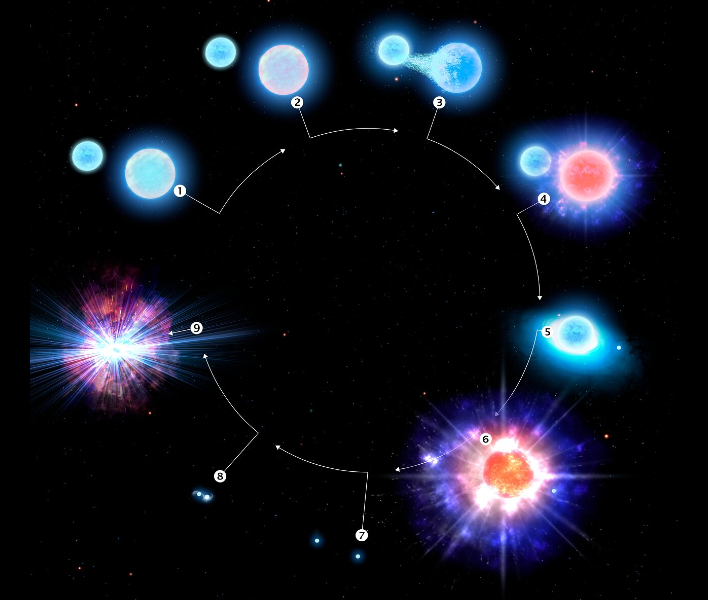This Rare Star System Will Produce Gold In A Spectacular Kilonova Explosion
A group of astronomers at the National Science Foundation's NOIRLab announced on January 31, 2023, that they had discovered the first confirmed detection of a star system that will form a kilonova. A kilonova is an ultra-powerful gold-producing explosion produced by merging neutron stars. This type of system is extremely rare, with only around 10 such systems believed to exist in the entire Milky Way, according to a press release from NOIRLab.
Star system CPD-29 2176 was first identified using NASA's Neil Gehrels Swift Observatory. Swift is part of NASA's medium explorer (MIDEX) program, which was launched into low-Earth orbit on November 20, 2004. The star system is located around 11,400 light-years from Earth and is made up of a neutron star created by an "ultra-stripped" supernova and a closely orbiting massive star that is also nearly an ultra-stripped supernova.
An ultra-stripped supernova is defined as the end-of-life explosion of a massive star that has had most of its outer atmosphere stripped by a companion star. It lacks the power of a traditional supernova, which would otherwise "kick" a close-by companion star out of the system.
"The current neutron star would have to form without ejecting its companion from the system. An ultra-stripped supernova is the best explanation for why these companion stars are in such a tight orbit," explained Noel D. Richardson at Embry-Riddle Aeronautical University and lead author of the research paper. "To one day create a kilonova, the other star would also have to explode as an ultra-stripped supernova so the two neutron stars could eventually collide and merge."
Astronomers have hypothesized for some time about how the exact conditions could lead to a kilonova. Andre-Nicolas Chene, NOIRLab astronomer and co-author of the paper, remarked, "These new results demonstrate that in at least some cases, two sibling neutron stars can merge when one of them was created without a classical supernova explosion."

"This system reveals that some neutron stars are formed with only a small supernova kick," added Richardson. "As we understand the growing population of systems like CPD-29 2176 we will gain insight into how calm some stellar deaths may be and if these stars can die without traditional supernovae."


